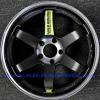M35 Reverse Wire Pick Up At Shifter. Anyone Know?
Announcements
-
Similar Content
-
Latest Posts
-
Yeap, all the NC's that I originally looked at that had a hard top were PRHT, which makes the roof line look horrible, hence why I said nope to them My only caveat for another MX5 was it needed to have a hard top, and initially I didn't think you could get a detachable hard top for the NC, like my NB had Again, a big thanks to Matty for helping me source the detachable hard top for my little girl, they are as rare as hens teeth in Australia, and the few people who have them, keep them Also to Greg, for initially pointing me in the NC direction NC PRHT 🤢🤮 Not mine (I really should take more photos of my car), but a NC with the detachable hard top 😁 To me, the difference in how the detachable hard top roof line looks, and how it actually follows the bodies lines, like they do on NA's and NB's, is chalk and cheese compared to the bulbous looking PRHT
-
By TurboTapin · Posted
Haha good old Letterkenny! If you're looking for another great english canadian comedy, I strongly recommend Trailer Park Boys. -
By TurboTapin · Posted
I live in a French European province, within a very metric country. We hate football here and the statue of liberty was actually built in France haha. Sadly, we're currently also feuding hard with the US due to tariffs. The US is the US. Everywhere else, is everywhere else. -
Heater wasn’t working in my 32 so I decided to pull my dash out ( sounded like a great idea at the time) so initially I was sure the heater core was blocked. When I pulled it out turns out that the heater blower actuator was cable tied so it stayed shut and this prevented the heater core from doing its job as well as flowing. so currently the dash is out the heater core is out and seems to be fine but I think I’m in over my head and need someone that knows what they are doing to take over and get it finished. I’m located in mt Annan, nsw 2567 if anyone has any ideas or suggestions please let me know
-








Recommended Posts
Create an account or sign in to comment
You need to be a member in order to leave a comment
Create an account
Sign up for a new account in our community. It's easy!
Register a new accountSign in
Already have an account? Sign in here.
Sign In Now